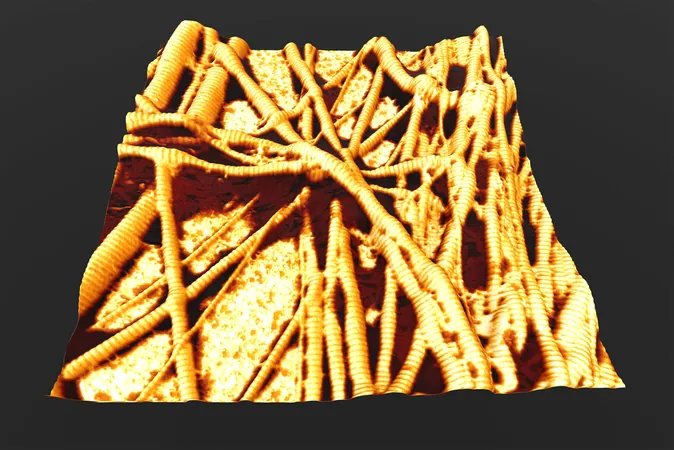
Breakthrough Discovery: How Fat Molecules Transform Collagen Fibrils!
2025-09-10
Author: Yu
Unveiling the Hidden Secrets of Collagen Fibrils
In a groundbreaking study by researchers at Chemnitz University of Technology, the hidden world of fat molecules within collagen fibrils has been unveiled. These fibrils are the backbone of connective tissues, including skin, tendons, and bones, and now we learn they have a surprising ally—fat!
The Role of Fats in Our Bodies
While we've known fats and oils can enhance leather made from collagen, the exact role of these fat molecules within our bodies remained largely a mystery. This new research, published in Soft Matter, sheds light on how fats interact with collagen to influence its mechanical properties and water content.
Why This Matters: Impacts on Health and Aging
Understanding collagen's chemical makeup is crucial for grasping how our tissues grow, age, and even how diseases develop. Unlike traditional chemistry, which often isolates components for study, this research takes a holistic approach. It acknowledges that biological systems are a complex web of molecules that all play vital roles.
Revealing the Power of Triacylglycerols
At the heart of this discovery are triacylglycerols, common natural fat molecules that researchers found wedged between collagen strands. These fats make up about 9% of the dry volume of collagen fibrils in chicken tendons. Their presence influences how collagen fibrils stick together, providing insights into the biomechanics of our connective tissues.
Innovative Techniques Revealed
To uncover these findings, Dr. Martin Dehnert and Prof. Dr. Robert Magerle employed an innovative analysis protocol featuring atomic force microscopy. They meticulously washed the collagen fibrils, first removing surface fats with hexane, then extracting the hidden fats with a polar solvent. This meticulous method allowed them to observe changes in the fibrils' structure and properties.
A Challenge to Old Beliefs
This research not only highlights the significant role of fats in collagen fibrils but also challenges long-standing assumptions about their chemical composition. With this new understanding, we stand on the brink of unlocking further secrets about how connective tissues function, potentially transforming our approach to health, aging, and disease.
The Future of Tissue Research
As scientists continue to explore the intricate relationship between fats and collagen, the implications for medical science are immense. This revelation could pave the way for novel treatments and materials, revolutionizing how we understand and interact with our own bodies.




 Brasil (PT)
Brasil (PT)
 Canada (EN)
Canada (EN)
 Chile (ES)
Chile (ES)
 Česko (CS)
Česko (CS)
 대한민국 (KO)
대한민국 (KO)
 España (ES)
España (ES)
 France (FR)
France (FR)
 Hong Kong (EN)
Hong Kong (EN)
 Italia (IT)
Italia (IT)
 日本 (JA)
日本 (JA)
 Magyarország (HU)
Magyarország (HU)
 Norge (NO)
Norge (NO)
 Polska (PL)
Polska (PL)
 Schweiz (DE)
Schweiz (DE)
 Singapore (EN)
Singapore (EN)
 Sverige (SV)
Sverige (SV)
 Suomi (FI)
Suomi (FI)
 Türkiye (TR)
Türkiye (TR)
 الإمارات العربية المتحدة (AR)
الإمارات العربية المتحدة (AR)